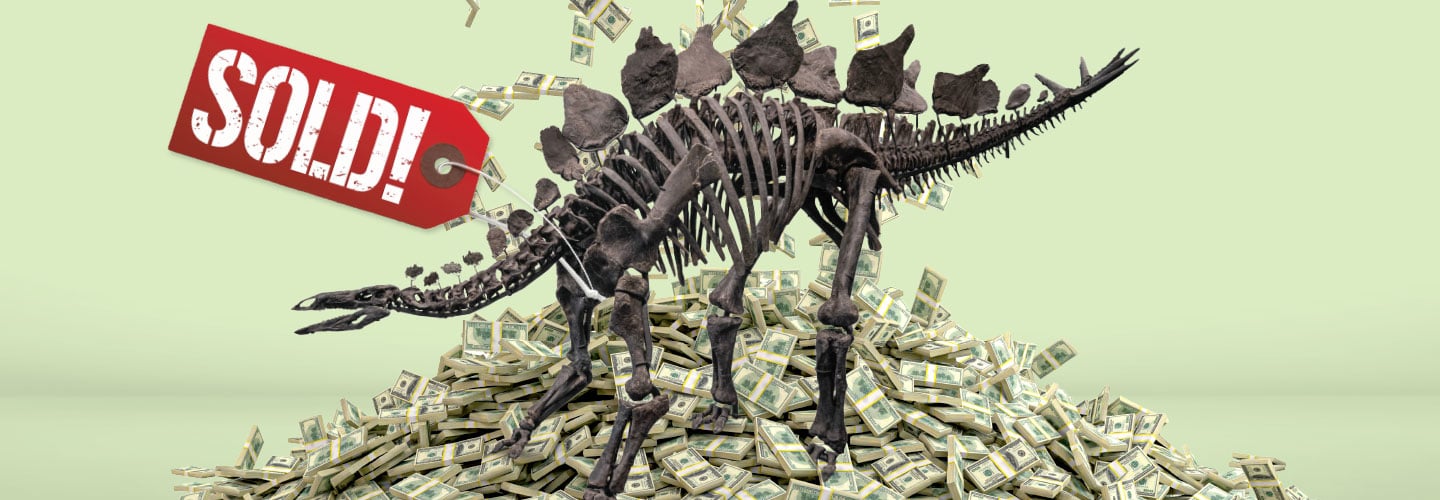This past summer, a massive Stegosaurus skeleton, nicknamed Apex, was put up for auction. It sold for a whopping $44.6 million! That made it the most expensive fossil—the preserved remains of an ancient organism—ever purchased.
The sale of dino skeletons is a big business, with fossils fetching hundreds of thousands to millions of dollars (see Key Moments: Major Dino Sales). In most cases, that makes the skeletons too expensive for museums to buy. Instead, wealthy people purchase the fossils and get to decide their fate. That could mean displaying the bones in their living room—or locking them away in storage.
Paleontologists—scientists who study past life on Earth—aren’t happy with the situation. Apex’s skeleton, which was discovered in Colorado, “is part of the natural history of the United States,” says Spencer Lucas, a paleontologist at the New Mexico Museum of Natural History. “And I don’t think our natural history should be sold.” Instead, he says, fossils should be preserved in public institutions, like museums and universities. There, they can be catalogued, protected, studied, and exhibited to the public.
Thankfully, most privately owned fossils end up donated or loaned to museums. Apex is now on display at the American Museum of Natural History in New York City. “In my perfect world, nobody would be selling fossils,” says Lucas. “But the fact is, it happens.” The goal, he says, is to make sure the fossils are accessible to anyone who wants to learn from them.
This past summer, a massive Stegosaurus skeleton went up for auction. It was nicknamed Apex. The skeleton sold for a whopping $44.6 million! Apex is a fossil, or the preserved remains of an ancient organism. It became the most expensive fossil ever purchased.
The sale of dino skeletons is big business. Fossils fetch hundreds of thousands to millions of dollars (see Key Moments: Major Dino Sales). In most cases, the skeletons are too expensive for museums to buy. Instead, wealthy people purchase the fossils. Then they get to decide what happens to the fossils. Buyers could display the bones in their living room or even lock them away in storage.
Paleontologists aren’t happy with the situation. These scientists study past life on Earth. Spencer Lucas is a paleontologist at the New Mexico Museum of Natural History. Apex’s skeleton was discovered in Colorado, so it “is part of the natural history of the United States,” says Lucas. “And I don’t think our natural history should be sold.” He says that fossils should be preserved in public institutions, like museums and universities. There, they can be catalogued, protected, and studied. And the public can view them.
Thankfully, most privately owned fossils get donated or loaned to museums. Apex is now on display at the American Museum of Natural History in New York City. “In my perfect world, nobody would be selling fossils,” says Lucas. “But the fact is, it happens.” He says the goal is to make the fossils available to everyone. Then we can all learn from them.

